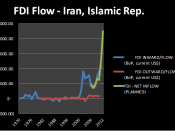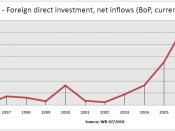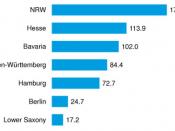Promotional efforts to attract foreign direct investment (FDI) have become the focal point of competition among developed and developing countries (The World Bank Group 2005). Several trends are reinforcing traditional impulses for foreign direct investment, such as access to natural resources, markets, and low-cost labor.
Malaysia has been often dubbed the 'lucky country' because of its rich mineral resources, including natural rubber, cocoa, crude oil and natural gas. However, it has not rested on its laurels but has been racing over the past three decades into the 21st century (Kim Sung 2002).
The fruition of Malaysia's global competitiveness as an investment destination can be witnessed in the multinational corporations' (MNCs) relocation of their regional headquarters from Singapore or Thailand to Malaysia, such as Taiwan-based global shipping firm Evergreen Shipping that recently transferred its shipping base.
The competitive of Malaysia versus Thailand in terms of attracting foreign direct investment is clear.
Pro-Business Policy: Malaysia's market-oriented economy and government policies give foreign companies opportunities for growth and generate profits that have made the country a highly competitive manufacturing and export base in Asia. It now allows foreign investors to hold 100 percent equity, irrespective of level of exports with the exception of certain products Malaysian companies have the capability to produce.
Looking Into Long-Term Political stability is the most important factor in attracting foreign investments. It removes investors' apprehension and brings consistency in government policies. This business-oriented environment has today resulted in Malaysia being one of the largest recipients of foreign direct investment (FDI) among developing countries. Malaysia would be even a more attractive market than Korea with the establishment of the ASEAN Free Trade Area (AFTA) by 2003, when intra- regional tariffs will be reduced to a minimal level of between zero and 5 percent,



The competitive of Malaysia versus Thailand in terms of attracting FDI.
A so-so essay, not fantastic.
1 out of 2 people found this comment useful.